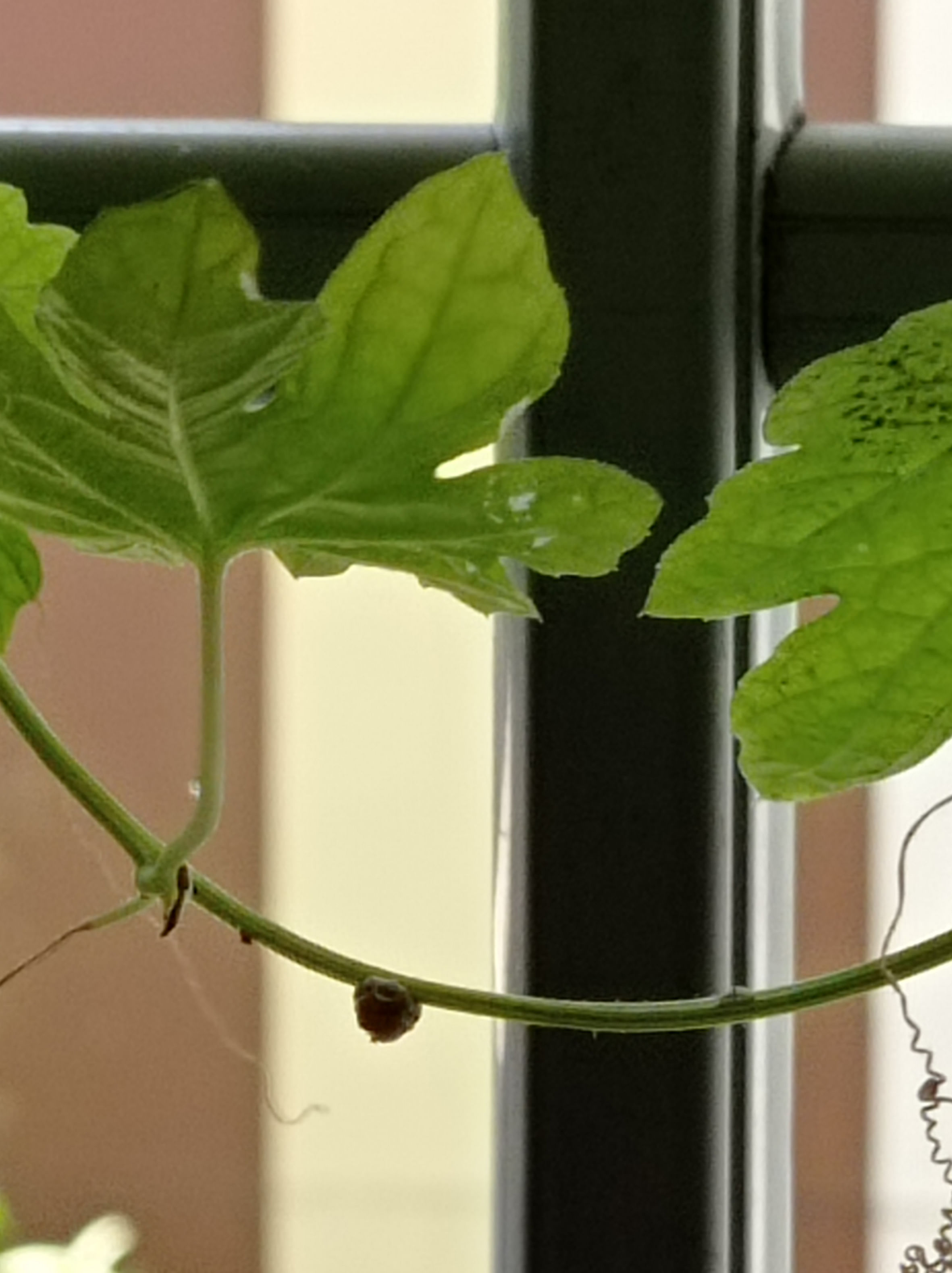Plants have fungal disease and nutrient deficiency
My Indian borage is grown in a semi-sheltered balcony. It is overgrown, but some leaves are yellowing with burn marks. What is the cause?
Also, my pot of jasmine is grown in an open balcony with sun from the west. What is the reason for its pale leaves? I fertilise the plant fortnightly.
Finally, I bought this plant from a store. I water it daily, bottom up from a dish. The leaves' edges tend to get black. I have pruned several larger stalks, but to no avail. How can I help it grow healthily?
Tan Lily
The leaves of your Indian borage were probably infected by a fungal disease. The affected leaves are older and located in the lower, more crowded part of the plant.
Such leaves are shaded from light and may be closer to the soil surface. You should prune the plant more regularly to let sunlight penetrate all parts and improve air circulation. The Indian borage can be exposed to more sunlight. Also, check if the plant is pot-bound, as it should be given sufficient root volume to grow better.
As for your jasmine plant, the chlorotic leaves indicate it may have a nutrient deficiency. Check if the soil pH level is suitable for your plant. Ideally, it should be slightly acidic, between 6.0 and 6.9. Feed your plant regularly with a fertiliser that contains chelated trace elements.
The white parts of your Tradescantia cultivar, called Nanouk, are highly susceptible to damage and disease. Ensure the growing medium dries out between each watering. Also, make sure there is sufficient light exposure and air circulation to reduce the likelihood of disease. You may find it beneficial to change the growing medium to one that is more aerated and well-drained.
Bittergourd vine infested with scale insects

Recently, I noticed black spots on the leaves of my bittergourd plant. Now, there are lumps on the stems. The black spots and lumps both appear to be increasing in number. Are they a cause for concern? How do I solve these issues?
Rosalyn Cheong
Your bittergourd plant has likely been infested with scale insects. You can easily pick them off to reduce the initial number of pests.
Scale insects can be managed by spraying the plant thoroughly with summer oil and pyrethrins (derived from insecticidal chrysanthemum).
Pesticides are best rotated to reduce the likelihood of the pests developing resistance, and to ensure that they can be more effective as they act via different modes.
Inspect your plant regularly so you can treat any issues early.
Rosemary may be infested with sucking insects and need fertiliser

The leaves of my rosemary plants look unhealthy and patchy. How can I nurse my plants back to health?
Rose Tang
The yellow patches may be caused by sucking insects such as lace bugs. Check your plant for their presence and use pyrethrins to manage their population.
The slightly yellow new leaves and the generally sparse canopy of your plant may indicate that it lacks nutrients.
Feed your plant regularly. The growing medium should also be gritty and allow aeration and drainage.
Growing media that retain moisture for long periods, such as those that contain a lot of organic matter, can cause roots to rot and prevent your plant from taking up nutrients.
Begonia may have fungal disease

I was told to spray this plant and keep it indoors. However, the leaves look pale. One leaf also has dry patches. How do I take care of this plant?
Kok Kah-wei
The plant is the Polka Dot Begonia (Begonia maculata). Though novice gardeners keep it deep inside the home where conditions are dim, it is not an indoor plant.
The plant should be placed by a window where it can get filtered sunlight for at least four hours daily. A lack of air circulation and light can cause plants to weaken and become susceptible to diseases and spotting, especially if you misted them. Grow the plant in a bright, open area with high humidity and some gentle air movement. The growing medium should also be aerated and well-drained, as a soggy root zone will cause the plant to rot.
Papaya plant may be infected by a viral disease and Ceylon spinach has fungal spots

Why do my papaya plants have yellow spots on the leaves and why are the leaves also yellow? For my spinach, there are round spots on the plant. How can I treat the problems?
Tara Tan
The irregular yellow patches on your papaya plant may indicate that it has been infected with a viral disease.
Viral diseases can be spread by sucking insects and contaminated cutting tools. They cannot be cured and infected plants are usually removed to reduce the disease's spread to nearby plants.
All infected plant materials must be removed from the site and crop rotation carried out. Manage the sucking insect population and ensure proper sanitation to prevent this problem.
As for your Ceylon spinach, its leaves are infected with a fungal disease, which is common in this species.
Prune infected leaves and try to grow your plant under sunny conditions. Plants grown in the shade with poor air circulation are more susceptible to this disease.
The application of fungicides may be required for adequate control of the disease. Ensure that the withholding period after fungicide application has elapsed before harvesting plant parts for consumption.
- Answers by Dr Wilson Wong, an NParks-certified practising horticulturist, parks manager and ISA-certified arborist. He is the founder of Green Culture Singapore and an adjunct assistant professor (Food Science & Technology) at the National University of Singapore.
- Have a gardening query? E-mail it with clear, high-resolution pictures of at least 1MB, if any, and your full name to stlife@sph.com.sg. We reserve the right to edit and reject questions.

